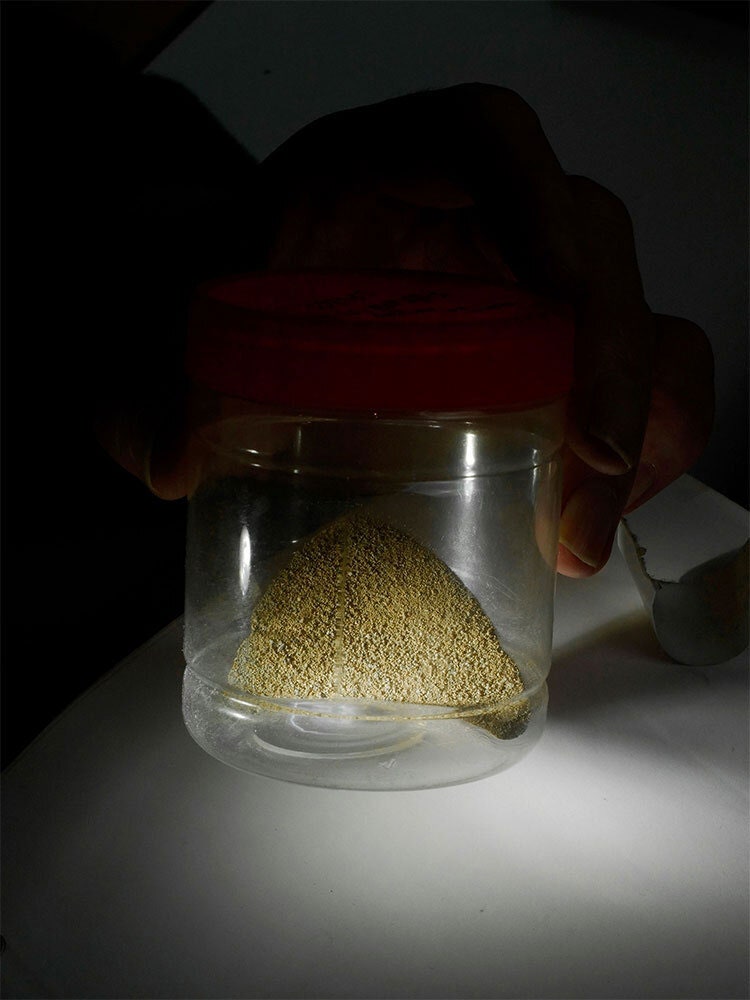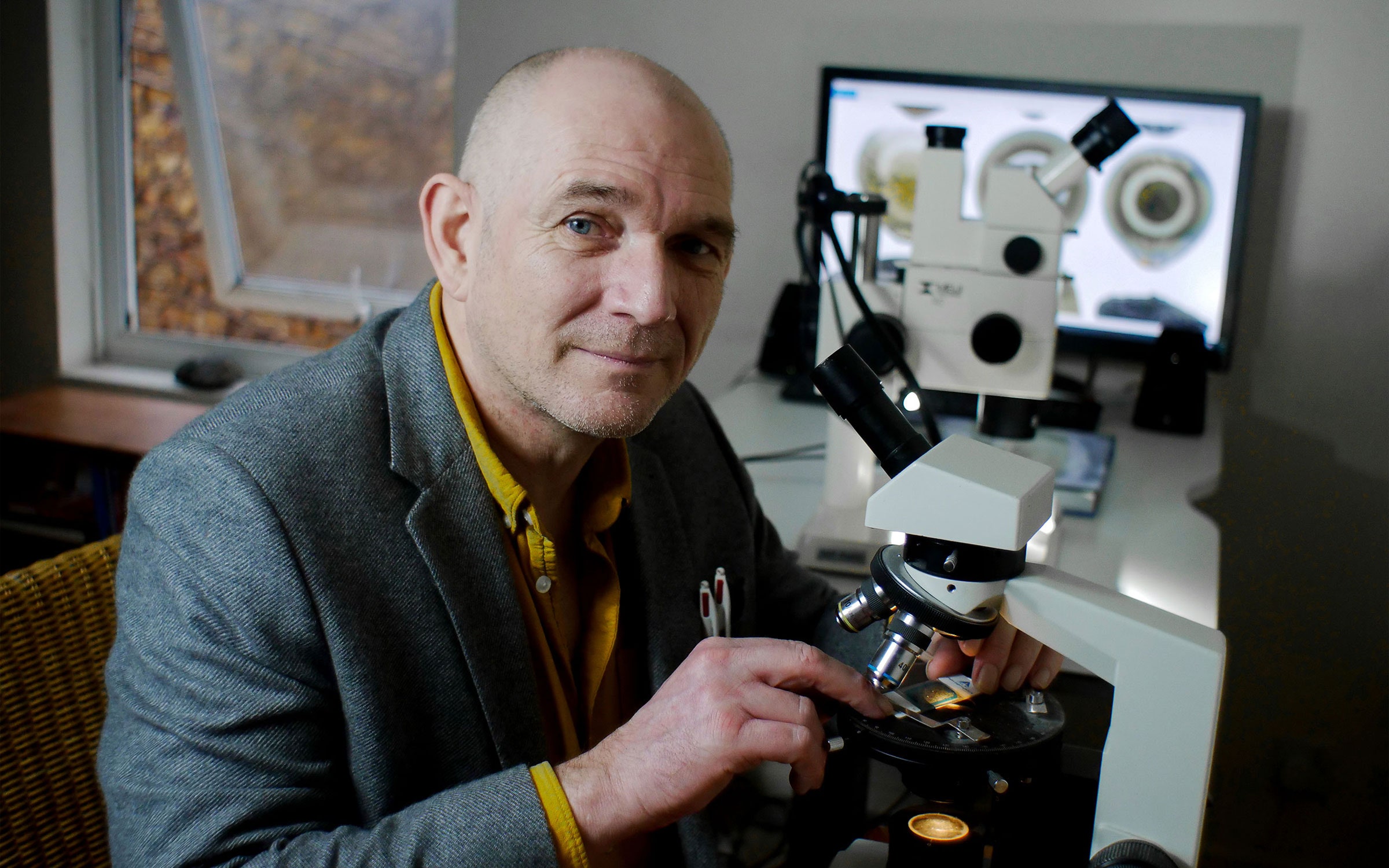
This is how micrometeorites look under a microscope.
Every year, there are about 10 particles of extraterrestrial matter - cosmic dust - per square meter of the Earth's surface. “This means dust is everywhere. On the streets, in your house, perhaps even on your clothes, ”says Matthew Genge, a scholar at Imperial College London. He specializes just in space guests - micrometeorites.
Round and multicolored, micrometeorites differ from each other. But until 1870, no one noticed them, until the HMS Challenger expedition found them at the bottom of the Pacific Ocean. On land, it is more difficult to find something like this, since ordinary dust quickly hides guests from space.
For centuries, scientists have believed that strange objects from the bottom of the seas and oceans are molten particles from the surface of larger meteorites that drift away from the main object as they fall to Earth. But in fact, this is not always the case - most of the cosmic dust comes to us not from the surface of meteorites, but from cosmic rocks, which are millions of kilometers from the Earth. These particles leave tiny messages that scientists decode. Genj is one of them, he has been doing this for 30 years .
He started working at the moment when scientists learned that there are many micrometeorites in Antarctica. About 10% of the dust found in the ice of Antarctica came to us from space. Therefore, Genj began to study this dust, its composition and morphology. There are few micrometeorite specialists, this is a small and close community. But Genge stands out somewhat - the fact is that he was able to learn how to interpret the information carried by cosmic dust. And not so much about the origin of dust, but about the Earth at different points in the history of our planet.

Cosmic dust in a vessel. It was collected in Antarctica in
2006.Genge is now studying dust samples at home, since work in the laboratory has not yet been restored due to the pandemic. He took the collected dust, a microscope, which is enough for work.
Why exactly cosmic dust
Astronomers usually pay maximum attention to stars and galaxies. This is because they are very noticeable, first of all, and they give a lot of information about space, and secondly. But dust, although completely invisible, can complement our knowledge of space and what surrounds us. After all, particles of cosmic matter contain a huge amount of information about where they came from and how they got to us. There is a huge amount of dust in space, and it hits the Earth much more often than meteorites.
Where does the dust come from?
Despite the fact that scientists have known about cosmic dust for a very long time, until the 1990s astronomers knew almost nothing about what is the generator of dust in the solar system. French scientists, for example, believed that dust comes to us from comets. But in the end, it was possible to understand that micrometeorites (i.e. dust) come to us from asteroids. Most of them are similar in composition to meteorites of the carbonaceous chondrite type.
Well, what can you learn from micrometeorites?
They provide information that is difficult or impossible to obtain when studying ordinary meteorites. In addition, the hit of a meteorite on our planet is an accident. This requires a piece to break off from the asteroid, then this piece would move in an orbit different from the orbit of the asteroid, and all factors would converge in such a way that the meteorite would fall to the Earth.
With dust, everything is similar and, at the same time, a little different. Yes, in order for a dust particle to come off the surface of an object, an external influence is needed. But then the dust moves under the influence of sunlight. This process is called the Poynting-Robertson effect.... The effect was first described in 1903 by the famous British physicist John Henry Poynting, who explained it in terms of the aetheric theory of electromagnetism. The correct explanation of the effect from the point of view of general relativity was given by Howard Percy Robertson in 1937.

Matthew Genge studying cosmic dust at his home in London
So, cosmic dust is spiraling towards the Sun. The trajectory of motion crosses the orbits of the planets, so the probability of dust capture by any planet, including the Earth, is quite high. In general, this probability is much higher than the probability of a meteorite hitting Earth. In addition, cosmic dust, micrometeorites, comes to us from all corners of the solar system, so a lot of information can be extracted.
In general, a single meteorite provides a large amount of information about a small number of objects. And cosmic dust provides a small amount of information about many objects. Well, all this together provides scientists with a huge array of data.
Where else does the cosmic dust fall?
Of course, not only to Earth. It hits Venus, Mars, Jupiter and other objects. As for the Earth, there is the assumption that cosmic dust is one of the factors that led to the emergence of life. Micrometeorites continually bring amino acids to our (and other) planet - the basis of life. Of course, for life to arise from amino acids, much more is needed than just increasing the concentration of amino acids. However, this is one of the important factors. And, by the way, micrometeorites are the main source of organic matter for Mars.

In addition, space dust plays an important role in the food chains (food chains) of deep-sea biosystems. Some regions of the ocean are so far from land that organisms that live there need a different source of some elements. It can be, for example, iron - and it is micrometeorites that bring iron to these organisms.
What does it reveal about the solar system?
The composition of the various areas of the system. So, during its formation, the composition of different "layers" changed. And the more time passes, the stronger the change. When scientists study meteorites and micrometeorites, they try to understand where the object was formed in the “disk” of the solar system and how the composition and structure of the layers of this disk changes.
Each planet was formed in unique conditions, so they are different from each other. Understanding these conditions helps to understand what planets from other star systems might look like and what is the principle of their formation.
And what does cosmic dust help to understand about the Earth?
First of all, it is the atmospheric composition of the planet in different eras. When a very hot object passes through the atmosphere, it interacts with it. By studying this object, you can determine the features of the atmosphere at a certain period of time.
One study published in Nature reveals the results of a study of micrometeorites, dust that fell to Earth 2.7 billion years ago. These objects were found in sandstone in Australia and studied. As a result, we managed to understand what the atmosphere was like at that time.
A piece of hot metal placed in the atmosphere absorbs oxygen. And it's a great tool for measuring the composition of the Earth's upper atmosphere. If scientists can study the micrometeorites on Mars, they will get a fair amount of data on the atmosphere of this planet in the past.

But for now, we are studying the history of the Earth. So, before the study of micrometeorites from Australian sandstone, it was believed that 2.7 billion years ago there was very little oxygen in the atmosphere. But, having studied these objects, we realized that no - there was a lot of it.
True, it takes a lot of time to study cosmic dust. The scientist mentioned above is still examining the samples he collected in 2006, so this is a long process. Collecting samples, by the way, took only 5 minutes.
As for the Antarctic, they managed to collect about 6 kg of dust, and this volume turned out to be about 3,000 of the most different micrometeorites.
